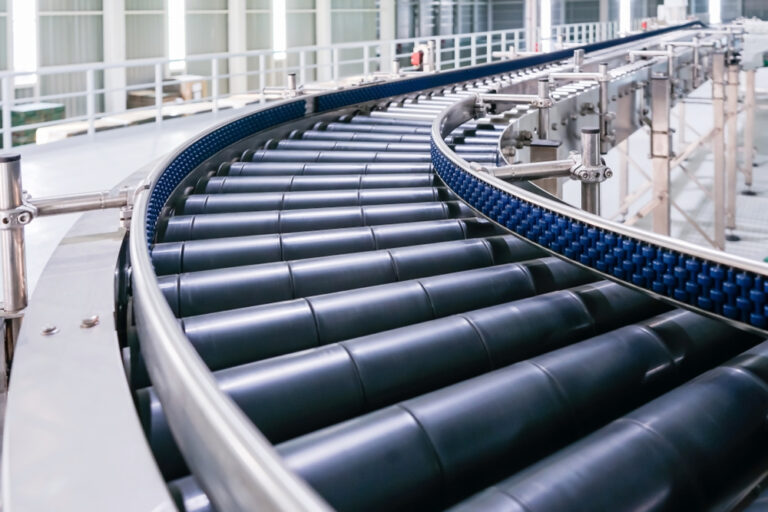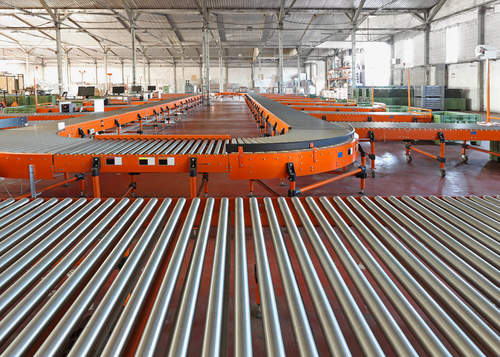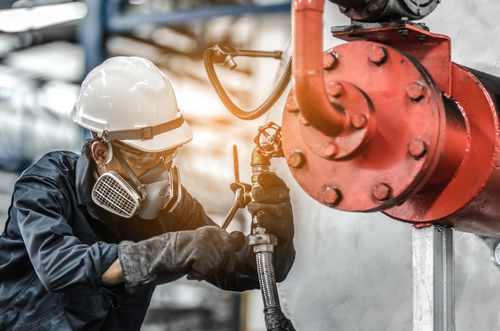Conveyor belt systems are the foundation of many industrial operations, and their continued functionality is essential to keeping everything running smoothly. These complex machines can have a variety of things go wrong, whether due to production oversight or usual wear and tear. The four most common causes of conveyor system failure are:
- Mistracking
- Slippage
- Carryback
- And spillage
Each of these issues is preventable through the proper care, use, and inspection of your conveyor system. Here is what you need to know about each of these specific causes of machine failure and how to prevent them.
1. Mistracking
Mistracking occurs when the conveyor belt is not centered on the rollers, instead shifting to one side of the conveyor. This can cause the belt to wear down faster and even cause irreparable damage, requiring the replacement of the entire belt. The belt may also catch on other parts of the conveyor system or cause the materials moving along the conveyor to spill or shift unsafely.
Mistracking most frequently happens when materials build up on a part of the conveyor, or if the belt or rollers are worn and damaged. Other causes of mistracking include misaligned rollers, incorrect splicing, or too much belt tension.
Preventing Mistracking
Because so many issues may lead to mistracking, there is no “one size fits all” fix to preventing mistracking from ever occurring. The best way to prevent mistracking—or rather, to solve mistracking before it becomes a significant issue—is through regular inspection of conveyor belt alignment. Regularly cleaning and maintenance of your conveyor system will reduce the risk of material build-up and overall wear and tear.
Minimal amounts of mistracking can be fixed by knocking the idlers back into place. But more serious or complex mistracking should be addressed by a high-quality mechanical contractor who can assess the underlying cause and help create a plan for repair and future prevention.
2. Slippage
Belt slippage is when the belt cannot turn around the pulley, and usually happens around the head pulley. When the belt and pulley cannot grip each other properly, this slippage can significantly slow down production and keep materials from moving down the conveyor system at an efficient pace. Slippage also puts excessive strain on the conveyor’s motor, which can lead to greater system failures.
Similar to mistracking, slippage can be caused by a variety of issues, such as:
- Heavy loads
- A smooth pulley surface or worn head pulley
- Not enough belt tension
- Buildup (specifically on the pulley)
- Cold temperatures
- Incorrectly installed pulley lagging
Preventing Slippage
The most important way to prevent slippage is through proper belt tension. While too tight of a belt can cause mistracking, belt tension that is too lax can result in reduced grip between the belt and the pulley. Finding the right balance of belt tension is essential to avoiding conveyor belt failures!
Pulley lagging—extra material added to a pulley for better grip—can also be installed when a conveyor system consistently experiences slippage, though poor installation may exacerbate the issue rather than solve it. Adding a snub pulley to increase the arc between the belt and the pulley can also help increase traction and reduce the possibility of slippage.
3. Carryback
If you have any experience at all with industrial conveyor systems, you’ve likely experienced carryback. Carryback is when material remains on the belt after discharge, meaning it gets “carried back” toward the start of the conveyor system. While minimal carryback is mostly just an inconvenient mess, the risk of materials getting into the undercarriage and building up on the rollers can lead to major conveyor belt failures.
Preventing Carryback
Considering how common carryback is as a conveyor belt failure cause, it’s fortunately relatively easy to prevent through proper cleaning and maintenance. In addition to routine cleaning of the entire conveyor system, belt cleaners should be installed at both the head and tail pulleys to catch and dislodge any carryback.
4. Spillage
When materials spill off the sides of a conveyor belt, this can cause problems both for your quality control and for the conveyor system itself. Material spillage happens most frequently at load and transfer points, where the materials are being moved around more than when they are just gliding down the belt.
Spillage can cause a variety of problems for your entire operation, including:
- Loss of materials or products
- Reduced productivity
- Materials falling on employees
- Employees tripping over or slipping on spilled material
- Increased wear and tear on the conveyor system
While some spillage is to be expected, industrial belt conveyors with significant amounts of spillage likely have an underlying issue such as belt or chute misalignment, a damaged or worn belt, or high-impact loading.
Preventing Spillage
Keeping your conveyor system clean and well-maintained should resolve most spillage issues. Make sure the chutes are kept clear and centered above the loading zone, and have additional protection installed on your system like skirtboards to reduce spillage and impact beds for heavy loading. Additionally, have your conveyor belt system regularly inspected for proper alignment and operation. If your conveyor belt system was designed and implemented by experts in material handling solutions, you should already have these measures in place!
How Conveyor System Maintenance Prevents Failures
Because each of these four issues can lead to other issues and result in system-wide failure if left unchecked, prevention is vital to keeping your conveyor system functioning properly! The best way to prevent conveyor belt failures is through routine conveyor system maintenance and inspection by a professional mechanical technician.
Our Support and Maintenance Team at Mathews Mechanical is available 24 hours a day, 7 days a week to ensure our clients always have access to the help they need with their essential material handling systems. From scheduling preventative maintenance to having immediate support when belt failures occur, Mathews Mechanical is on the case for your industrial maintenance and mechanical service needs. Contact us today to schedule your service!






